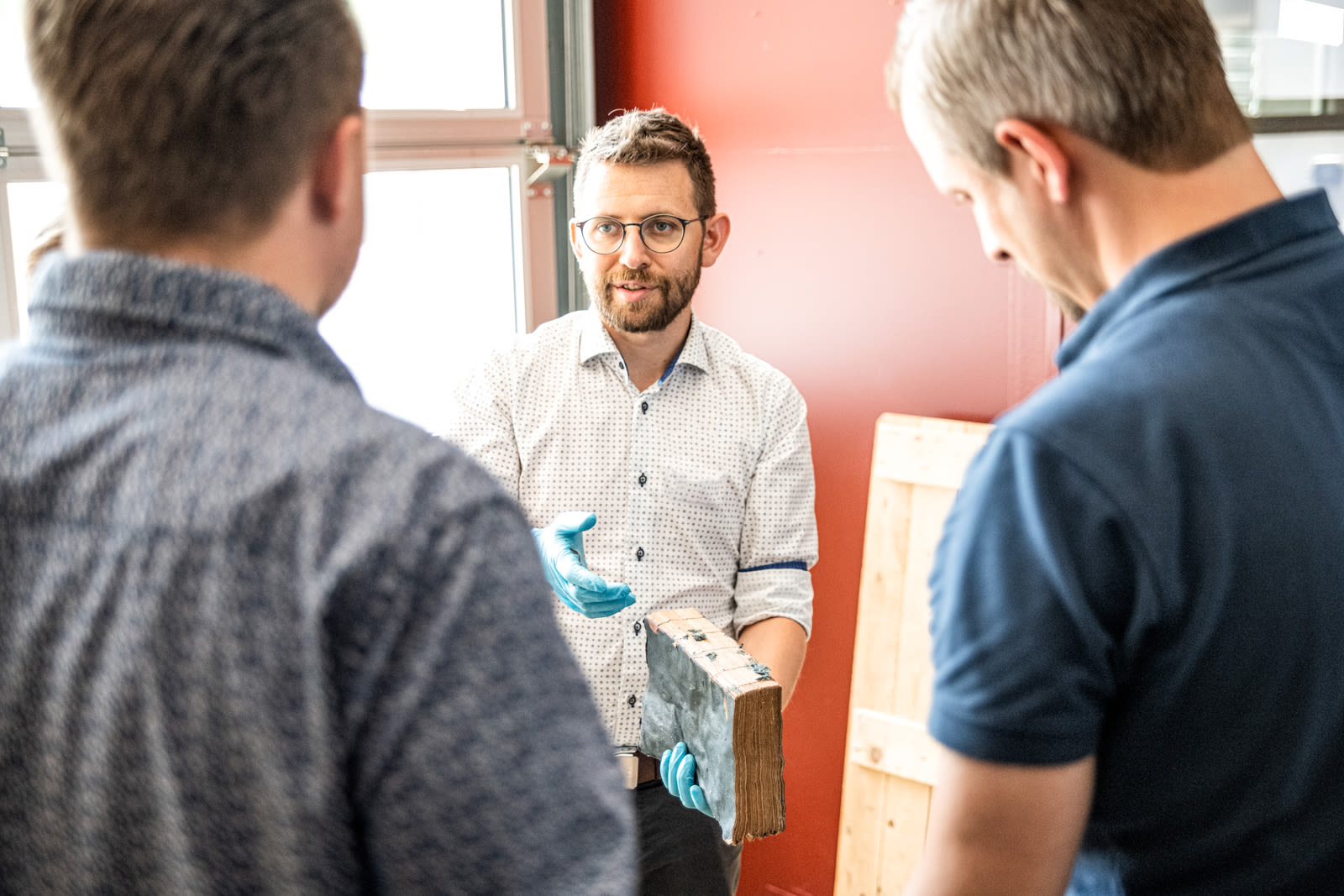Consultation
We offer comprehensive advice to archives and libraries.

Don’t hesitate to call. We’re ready to listen and to help.
Safety and risk analysis.
The first step in all consultation services is an analysis of the status quo. You define your priorities, and we take a closer look. We recommend preventive, risk reduction measures, and we help you put them in place.
The right ambient environment is a step in the right direction.
Regulating temperature and humidity in your storage space is essential for ensuring healthy holdings. Large fluctuations within a short period of time should be avoided. Seasonal temperature fluctuations are acceptable as long as the relative humidity remains constant (40 to 55 percent, 60 percent at the most for short periods of time). High humidity promotes the growth of microorganisms such as mould. For storing paper, we recommend a relative humidity between 45 and 55 percent at temperatures ranging from 14 to 18 degrees Celsius. Photographs, negatives, film/celluloid, audio tapes, video cassettes, CDs, records, diskettes and other highly sensitive audiovisual media should be stored at lower humidity and temperatures. To gauge the environment in an archival space, we generally work with absolute humidity. The ideal levels here are between 5.4 and 8.55 g/m3. We recommend that clients install a permanent environment monitoring system with data loggers to obtain the most precise results.
Good conservation means less damage should disaster strike.
Every object worth being preserved deserves the best-possible conservation. There are many different types of ageing-resistant containers suitable for long-term storage. This kind of high-quality storage material is a wise investment – also in the event of water or mould damage. For clients who need long-term storage solutions, we recommend products made of durable, acid-free paper and cardboard.
Cleaning and hygiene: a never-ending story.
Dust, traces of use, sediment accumulation due to age or storage conditions – they all cause deposits to form on an object’s surface, providing fertile ground for microorganisms like mould to flourish. And when air humidity is high, the tiny organisms begin to multiply. Dust is hygroscopic, meaning it forms a bond with water molecules in the air. Moisture also promotes the absorption of air pollutants and the formation of acids, which in turn accelerates the breakdown of cellulose. Cleaning in archives is a time-consuming process, and budget considerations often lead to cost-savings measures in this area. However, the impact of such decisions is generally underestimated. Healthy holdings are more durable, and they’re less vulnerable should water damage occur.
Pests: unpleasant roommates.
Pests multiply quickly and leave their traces beneath cupboards, behind shelves, in cracks and crevices – and especially in and on holdings in archives and storage facilities. They’re often introduced inadvertently in transport boxes and packaging material. A pest-control strategy reduces the risk they pose.
Light: an underestimated nemesis.
Both sunlight (with its UV and infrared radiation) and artificial light can permanently damage records and documents, with photographs and prints numbering among the most sensitive objects due to their material composition. High-energy UV rays are the most harmful, as they trigger chemical reactions in organic materials that cause problems like yellowing in paper or adhesive materials. Infrared radiation accelerates all chemical decay processes and can result in local dehydration. As a result, paper becomes fragile and can stain, while colours fade. In general, light exposure in archives and storage facilities should be limited as far as possible, and the recommended illuminance levels for lighting fixtures upheld.